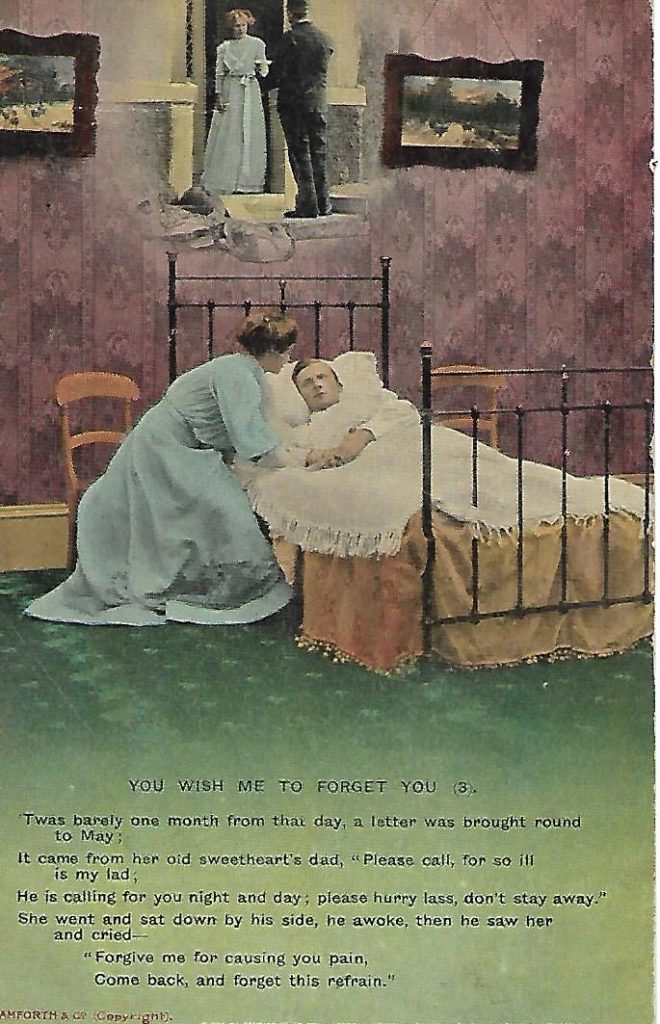You wish me to forget you (but you’ll want me back some day)
| AKA | You’ll want me back someday A lovers’ tiff A lad and a maid |
| First Published | c1909 |
| Writer/composer | Robert Donnelly | Roud | RN5352 |
| Music Hall Performers | unknown |
| Folk performances | Collected from the singing of: Costello, Cecilia; England : Warwickshire; 1967 Ling, George; England : Surrey; 1971 House, Bill; England : Dorset; 1986 Knight, Mrs. A.L.; England : Essex ; no date |
A lad and a maiden once stood in a pathway that led through a wood Said the lad to the maid with a start, "there's something that drifts us apart. Dear you must try to forget and fancy that we've never met You'll soon find a lover that's true, who will cherish you all life through" "I want no one else" said dear May, "But listen to what have to say:- "You wish me to forget you, you say tis best we part, When all my life I've loved you, in return you break my heart; 'Men were deceivers ever', I've often heard folk say, But believe me when I tell you, dear, you'll want me back some day". Twas barely one month from that day, a letter was brought round to May; It came from her old sweetheart's dad, "Please call, for so ill is my lad; He is calling for you night and day; please hurry lass don't stay away" She went and sat down by his side, he awoke, then he saw her and cried- "Forgive me for causing you pain, Come back and forget this refrain"
Another early 20th century tearjerker from the pen of Robert Donnelly remembered by traditional singers in the south of England. You can hear Cecilia Costello singing it at the Vaughan Williams Memorial library here or try George Ling’s version at the British library Sound archive.
This sentimental song doesn’t seem to have been associated with any particular professional singer on the Theatre or Music Hall stage so I would be cautious about calling it a “Music Hall song”.
There is evidence in local newspapers that it was being widely sung by amateur singers almost immediately after its publication in 1909. Rather than rely exclusively on the reputation of a star performer, the publishers, Lawrence Wright and Co, marketed directly to the public. They advertised widely in newspapers and using song postcards like the ones shown below. The artwork on the postcards was also used to produce magic lantern slides which could be hired or bought, presumably the slides were used at public singing events. This combination of song postcards and magic lantern slides seem to peak between 1910 and 1920 and is worth further investigation.
Sources:
- Entries in the Roud Indexes at the Vaughn Williams Memorial Library: https://archives.vwml.org/search/all:single[folksong-broadside-books]/0_50/all/score_desc/extended-roudNo_tr%3A5352
- Kilgarrif Sing Us
- Lyrics: From Bamforth song postcards (personal collection)
- Sheet Music: held at British Library (not accessed)
- Info about Lawrence Wright’s marketing: Blackpool Museum


